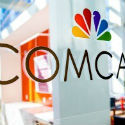Comcast teams with broadcasters for ATSC 3.0 tech test
Trial in Portland, Oregon will focus on the transmission of ATSC 3.0 signals over the HFC network, starting with 4K and HDR video.

Comcast is connecting with broadcasters in Portland, Oregon to test the delivery of IP-based ATSC 3.0 signals on its hybrid fiber/coax (HFC) network, starting with the passing through of broadcast video in the advanced 4K and High Dynamic Range 10 (HDR 10) formats.
ATSC 3.0, which carries the "NextGen TV" consumer brand, is a next-gen, IP-based broadcast signaling standard that supports the 4K and HDR video formats along with other new features and capabilities, such as interactive and targeted advertising, OTT-based live and on-demand video, immersive audio and advanced emergency alerts that include rich media rather than simple text messages. ATSC 3.0, which is viewed as an alternative broadband access technology as well, is also tied into Evoca, a new pay-TV service from Edge Networks that launched in Boise, Idaho earlier this year.
Comcast, which owns TV broadcaster NBCUniversal, has started initial testing of ATSC 3.0 over "limited cable infrastructure" with Pearl TV, a consortium of more than 750 TV stations operated by Cox Media Group, Graham Media Group, Gray Television, Hearst Television, Meredith Local Media Group, Nexstar Media Group, Sinclair Broadcast Group, the E.W. Scripps Company and Tegna.
A first step for ATSC 3.0 via HFC
The trial with Comcast in Portland is seen as an initial step toward delivering ATSC 3.0-based services to cable viewers and ensuring that those signals are compatible with the HFC network. What's still to be determined is whether cable operators will deliver or pass through the full range of services and apps supported by ATSC 3.0 that extend beyond the main local broadcast TV feeds.
"We are currently exercising our links with the broadcast ATSC 3.0 over-the-air transmission signal, as well as adding more fiber link resources to our local headend as an important first step," Jerry Parkins, senior director of digital technology and standards for Comcast, said in a statement.
ATSC 3.0-based services are being delivered over-the-air to TVs with the proper tuner technology in markets such as Pearl TV's model market testbed in Phoenix, Arizona. But the longer-term plan is to extend support to a broad range of devices, including laptops, tablets and smartphones. One Media 3.0, a unit of Sinclair Broadcasting, recently took possession of its first batch of Android smartphone evaluation units with embedded ATSC 3.0 antennas.
Meanwhile, the work underway in Portland "could give the industry a foundation for a 'real world' technical example of how to transmit ATSC 3.0 over hybrid fiber-coaxial infrastructure," Comcast and Pearl TV said.
Seven local TV stations are already on the air with ATSC 3.0 in Portland: KATU (ABC), KOIN (CBS), KGW (NBC), KPTV (Fox), KOPB-TV (PBS), KRCW-TV (CW) and KPDX (MyNet).
"We want to ensure that our viewers over cable can enjoy the enhanced video and audio experience that NextGen TV plans to offer," Anne Schelle, managing director of Pearl TV, which is also managing the Phoenix market trial implementation, said in today's announcement.
Related posts:
— Jeff Baumgartner, Senior Editor, Light Reading
About the Author(s)
You May Also Like




_International_Software_Products.jpeg?width=300&auto=webp&quality=80&disable=upscale)







